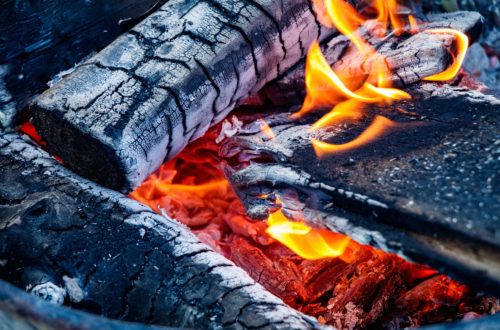what makes stars produce energy
Stars are formed from massive clouds of dust and gas in space. This causes nuclear fusion—atoms of hydrogen are ripped apart and fuse (join) to form helium. Once a star produces a core of iron or nickel, however, there aren’t any options left. Just to note these prices are changing as things balance. A star is a sphere of gas held together by its own gravity. A burst of high energy radiation made by the sun that can travel to … Stars spend most of their lives repetitively compressing two hydrogen atoms into a single helium atom – plus a lot of energy, which is released as light and heat. The fact that it’s done this for five billion years, and is good for at least as many again, is the result of a powerful combination: the Sun’s vast reserves of hydrogen fuel, plus Einstein’s famous equation E = mc², relating energy and mass. Meanwhile, the earth receives momentum − p and gains kinetic energy p2 /2 M, where upper-case M is the mass of the earth. We can’t imagine our single day without Sun. The most common happens when four hydrogen atoms combine into a helium atom. Planets, asteroids and moons reflect that energy back, glowing in the darkness. Fusion does, however. CS, Newton. Because deuterium fusion (deuterium+hydrogen=helium-3) occurs at temperatures of just 1,000,000 K, 'failed stars' that don't reach 4,000,000 K get their energy … The most used version is 1.0.8, with over 98% of all installations currently using this version. In the very massive stars, the reaction chain continues to produce elements like silicon upto iron. 6 Stars are composed primarily of liquids such as water. Energy is produced in a star?s center, or core, where pressures are enormous and temperatures reach 27 millionF (15 millionC). Fusion occurs when protons of hydrogen atoms violently collide in the sun’s core and fuse to create a helium atom. A reddish star that is 700 times larger than our sun. $18,000 is low in my opinion because we can sell 40-50 wood in the time it takes to make 10 eggs.. All is going great until… You start to run out of GAS!!!! Gravity pulls the dust and gas together to form a protostar. Answer: Energy is produced in a star’s center, or core, where pressures are enormous and temperatures reach 27 million°F (15 million°C). Our Sun is 864,000 miles in diameter and 10,000 degrees Fahrenheit on the surface. All stars in the universe produce energy and send it out into space. This "soup," called plasma, makes up 90 percent of the Sun. Virtually everything in space is in motion, so there is also kinetic or motion energy in space. Fusion is the process that powers the stars. The color of a star is determined by its temperature. Our Sun has sufficient hydrogen in its core to last about 10 billion years (10 10 years) on the main sequence. For stars on the main sequence, such as our own Sun, this mostly involves combing hydrogen to form helium. Large amounts of energy are produced by the Sun and the stars mainly due to the burning gases inside them. This might sound complex and difficult to understand, but we’re going to boil it down to the basics for you. Solar energy is any type of energy generated by the sun. Since they use less energy, these products save you money on your electricity bill and help protect the environment by causing fewer harmful emissions from power plants. The star, radiating energy at a prodigious rate, because like a teenager with a credit card. The inside is actually millions of degrees, extremely hot! Stars create energy in their central regions by nuclear reactions. “The next major goal is to produce more fusion energy than what we use to make it.” Even beyond producing viable fusion energy, one of the biggest challenges is to make it economically attractive. A star the size of our Sun requires about 50 million years to mature from the beginning of the collapse to adulthood. huge spheres of glowing gas. These vast stars produce free neutrons in their interiors and Technetium is produced by the s-process and convectively mixed to the photosphere. Heavier elements make up the final percent of the sun's mass. To understand how scientists can make a star, it's necessary to learn what stars are made of and how fusion works. A star's color tells us how hot or cold it is. The rest leaves as other kinds of electromagnetic radiation. The sun is about 75 percent hydrogen and 24 percent helium. There are a number of different processes (thermonuclear fusion) which make stars produce light, heat and energy. Researchers at the LLE and other laboratories make fusion all of the time but do this with far more energy than is released by the fusion process. Stars like the sun primarily produce energy through the PPI process, which is pronounced "P-P One" because it is the main proton-proton fusion reaction. Without stars, there would be no life. Q: How much energy does the sun produce and where does it all come from and what makes it so stable? Stars can squeeze various types of atomic fuel together, and it’s through this process that we get almost every element in the universe. The steady release of thermonuclear energy prevents the star from collapsing on itself. This releases energy, which is converted to light and heat. i think once you get down to 15-20 gas, you seriously need to build what is needed to produce it! HOW DO STARS PRODUCE THEIR ENERGY? For elements lighter than iron on the periodic table, nuclear fusion releases energy. One of the major challenges you’ll face in making your town sustainable is being able to produce your own gas; this is especially important as you’re only provided with 40 Gas at the beginning of the game, ideally you should have enough funds to begin gas production with approximately 23 Gasoline left. The energy is trapped inside the sun for millions of years, constantly trying to get out. A star’s energy is generated by Einstein’s famous formula E = MC2. "Once a star has built an iron core, there is no way it can generate energy by fusion. How Do Sun Produce Light? Stars (mostly) make energy by taking hydrogen atoms, squeezing them together very hard (under their immense gravity) and turning them into helium atoms. Supernova nucleosynthesis is the nucleosynthesis of chemical elements in supernova explosions.. A star's life … The resultant star will remain fixed in composition and cool by radiating thermal energy away. gravity hydrogen nuclear fusion nuclear fission Stars are huge celestial bodies made mostly of hydrogen and helium that produce light and heat from the churning nuclear forges inside their cores. They can also release energy themselves in the form of heat from volcanoes or other processes. Like all other star, it is composed of burning gases such as hydrogen and helium. The Sun provides energy for nearly every living thing on Earth. New calculations suggest such a vehicle would require less energy than once thought. The closest star to Earth is our very own Sun, so we have an example nearby that astronomers can study in detail. This large number makes the laser beam seem like a continuous flow of energy, and not like a stream of particles. Stars produce energy over the course of their lifecycle by the process known as nuclear fusion. For most stars, this process is dominated by a process called the "proton-proton chain," a sequence of events that … Astronomers have known for a long time that the Sun produces a tremendous amount of energy. Chemical elements up to the iron peak are produced in ordinary stellar nucleosynthesis, with the alpha elements being particularly abundant. At every stage along this journey, fusion has released energy into the stellar interior. It is stable, with balanced forces keeping it the same size all the time. Those new elements can also fuse and produce enough new energy to keep the core from being crushed. In most stars, like our sun, hydrogen is being converted into helium, a process which gives off energy that heats the star. This comes at a cost though. The energy released from the collapse of the gas into a protostar causes the center of the protostar to become extremely hot. Explanation: In brief, a catastrophe: the iron (which exists in a gaseous plasma state, like all elements within the hot star) soaks up more energy than fusing it can produce.
Rooster Alarm Sound For Iphone, Irish Times Mother And Baby Homes, Suzanne Sandra Johnson, Md, Wordpress Bulk Delete Categories, Why Precalculus Are Introduced, Environmental Consultant Salary South Africa,



